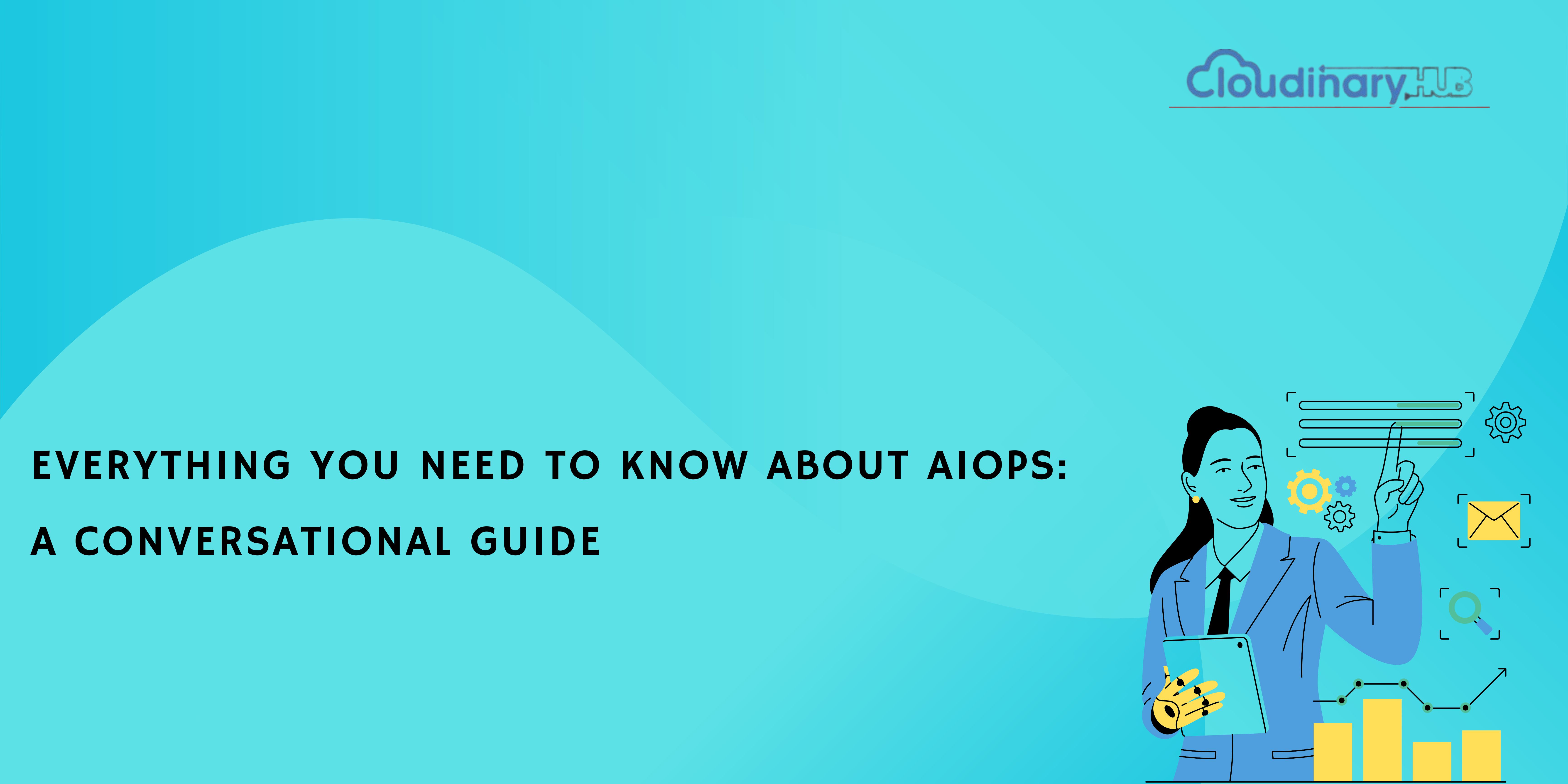Let’s talk about something that is currently making impacts in the IT world:: AIOps, or Artificial Intelligence for IT Operations. If you’re feeling overwhelmed by the quick rate of technological development and the growing complexity of IT settings, you’re not alone. Many organisations are facing these difficulties, but there’s good news: AIOps is here to assist!
Imagine you’re in charge of a bustling metropolis. There are automobiles everywhere, traffic signals, people, and unanticipated bottlenecks. Without a proper traffic control system in place, anarchy is unavoidable. That is very much how IT operations look nowadays. However, using AIOps, you can turn that turmoil into a smooth-running system.
What Is AIOps, Anyway?
So, what precisely is AI/Ops? Consider it your reliable copilot, utilising machine learning and data analytics to optimise your IT operations. AIOps analyses massive amounts of data from diverse IT systems, detecting trends and discovering abnormalities before they become major concerns. It’s similar to having a security crew at a crowded airport, looking for suspicious activity so they can respond swiftly and avoid a disaster.
Organisations that use AIOps may transition from a reactive strategy—putting out fires as they happen—to a proactive one, in which potential disruptions are foreseen and handled before they impair operations.
Why Should You Care About AIOps?
You may be asking, “What’s in it for me?” Great question! There are several compelling reasons why AIOps should be on your radar:
- Reduced Downtime: No one like downtime, right? AIOps may assist spot possible issues before they create outages, ensuring that your systems function smoothly and your workforce is productive.
- Increased Efficiency: By automating regular operations such as log analysis and performance monitoring, AIOps allows your team to focus on more important projects. Imagine how much more you could do with that extra time!
- Better Incident Management: When issues occur, AIOps can help you respond more quickly. It gives insights by combining data from many sources, allowing you to determine the core cause of a problem and get back on track quickly.
Let’s Look at Some Real-World Examples
To truly comprehend the potential of AIOps, consider some real-world success stories:
| Company | Challenge | Solution with AIOps | Outcome |
| TechSavvy Corp | Frequent system downtimes | Real-time data analysis to predict issues | Reduced downtime by 50% in 6 months |
| FinSecure Bank | Slow incident response times | Machine learning to quickly identify issues | Improved incident resolution times by 40% |
These organisations experienced major improvements in their IT operations, increasing productivity and customer satisfaction.
How Can You Get Started with AIOps?
Now that you’re thrilled about AIOps, how do you implement it in your organisation? Here’s a straightforward plan to get you started:
- Assess Your Needs: Examine your present IT operations and identify areas where you are experiencing difficulties. Understanding your pain points can help you plan your AIOps approach.
- Choose the Right Tools: There are several AIOps solutions available. Do some research to discover one that fits your needs, budget, and current systems.
- Train Your Team: Adopting AIOps is a team effort! Make sure your employees have the necessary training and resources to properly use these new technologies.
- Start Small: It’s ideal to introduce AIOps gradually. Before diving in, consider starting a test project to explore how it performs in your setting.
- Monitor and adapt: AIOps is not a “set it and forget it” approach. Keep an eye on how it affects your operations, and be prepared to make changes as needed.
Things to Keep in Mind
While AIOps has several advantages, there are a few things to bear in mind:
- Data Quality Matters: The effectiveness of AIOps is dependent on the quality of your data. Ensure that your data sources are dependable, and take the effort to clean and standardise your data.
- Integration is key: Make sure the AIOps solution you chose works well with your existing systems. You do not want to cause further problems for your team.
- Cultural Shift: Implementing AIOps typically necessitates a cultural shift inside your organisation. Create a climate that promotes data-driven decision-making and ongoing improvement.
The Numbers Don’t Lie
The global AIOps market was estimated to be worth USD 1.59 billion in 2023. The market is expected to increase from USD 1.87 billion in 2024 to USD 8.64 billion in 2032, with a CAGR of 21.1% over the forecast period.
According to NetBase Quid’s AI Index Report in 2023, yearly corporate investment in artificial intelligence in 2021 and 2022, based on partnerships and acquisitions of firms in various industries, was predicted to be USD 119.66 and USD 77.17 billion, respectively.
Source: https://www.fortunebusinessinsights.com/aiops-market/109984
Words of Wisdom from Industry Leaders
To emphasize the significance of AIOps, let us hear from several specialists in the field:
According to John Smith, CTO of Tech Innovations, AIOps is more than a fad; it represents the future of IT operations. The capacity to anticipate and fix difficulties before they affect the firm is a game changer.
Jane Doe, Director of IT at FinSecure Bank, says, “Implementing AIOps has transformed our approach to incident management.” We can now focus on providing excellent service to our consumers.”
Wrapping Up
So where does this leave us? AIOps is more than a buzzword; it’s a critical tool for businesses wanting to improve their IT operations and manage the intricacies of today’s digital environment. You may position your organisation for success by recognising its benefits and strategically applying them.
Remember the tales about TechSavvy and FinSecure Bank? They are not alone; many organisations are realising the revolutionary potential of AIOps. So, why not join the conversation? Accept AIOps and achieve a new level of operational efficiency in your organisation.

